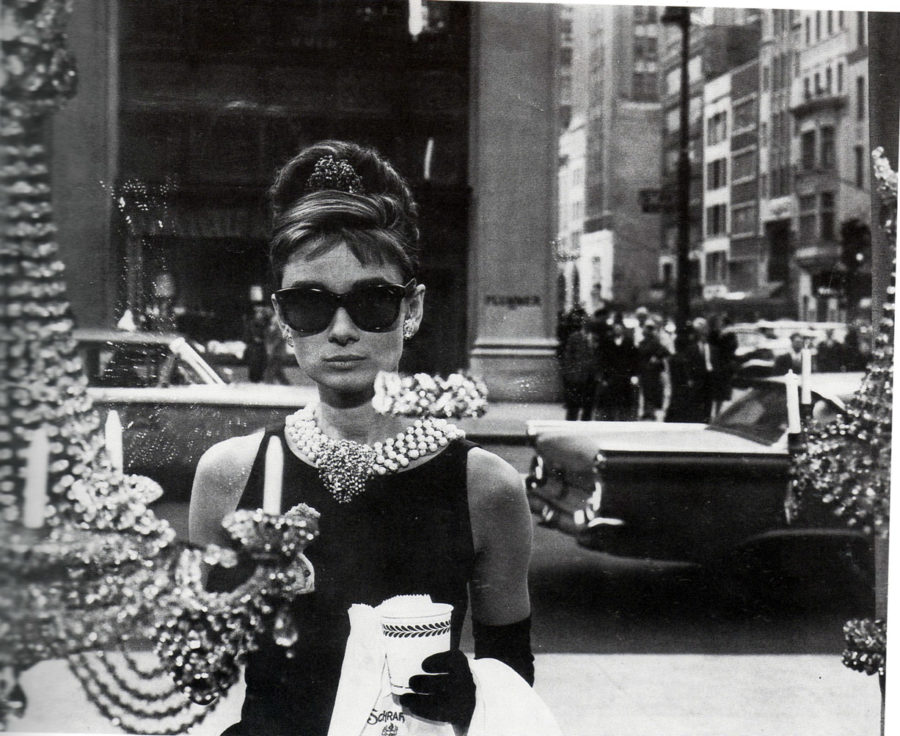THE TIMELESS LITTLE BLACK DRESS
October 12, 2020
During the early morning hours in New York City, a woman by the name of Audrey Hepburn steps out of a yellow taxi cab on fifth avenue, wearing an elegant black dress. The name of this movie, that would come to withstand the test of time for years to come is, Breakfast at Tiffany’s.
The film that is based on Truman Capote’s novel celebrated its 59th anniversary this past Oct. 5. One of the biggest symbols of this movie, “the little black dress”, worn by Audrey Hepburn, has left a long lasting impact on the world as an epitome of fashion.
The origins of the little black dress can be traced back to the 1920s when Coco Chanel designed a long-sleeved black dress that was featured on the cover of Vogue in 1926. It was intended to be a versatile and affordable piece of clothing that could satisfy a wide range of people.
The dress worn in the film by Hepburn’s character, Holly Golightly, was designed by French fashion designer, Hubert de Givenchy. Givenchy first created a shorter version of the dress, however, it was lengthened due being seen as too revealing of Hepburn’s legs.
It was eventually auctioned off in 2006, selling for 467,200 euros.
Givenchy mastered the essence of 1960s style through this effortlessly elegant dress, paired with a lavish pearl necklace, dark armoured sunglasses, matching black gloves and a tiara in Golightly’s hair.
In the movie, Golightly steps out onto the quiet streets of Manhattan, a rare sight, in front of the Tiffany & Co. store. There is an element of irony here that is both haunting and greatly moving, as she is wearing a party dress after getting back from a night out, looking rather sophisticated and polished.
With a dream-like tune playing in the background, Golightly holds her breakfast of a danish and a coffee in her hand, admiringly gazing through the windows of the store, dreaming of a world she will never have.
Golightly seems to have great smoothness, but in reality is a complete mess of a person, not liked by many people.
Avoiding going straight home from her night out, she eventually comes to terms with the reality of her life, feeling an empty pit inside of her stomach that can only be temporarily cured by the happiness that staring at the adorning jewels and diamonds of the Tiffany window brings her.
“The only thing that does any good is to jump in a cab and go to Tiffany’s. Calms me down right away,” Golightly said in the film. “The quietness and the proud look of it. Nothing very bad could happen to you there.”
From an outsider looking in, Golightly would appear to fit the image of the typical stylish, independent Manhattan socialite; this is what draws people in to her character and the essence of who she is.
Nearly a century later, Coco Chanel’s brilliant design of the little black dress has changed both the meaning of the word elegance and the way that women view fashion.
Before its contemporary revamp in 1926, the color black was generally associated with and reserved for funeral attire because of its seriousness.
Hepburn’s debut of the little black dress gave it the popularity it now has today, and has shown women the meaning of “luxury on a budget” with the importance of accessories.
“One is never underdressed or overdressed with a little black dress,” said Karl Lagerfeld, a German designer.
The little black dress has become a staple for a woman’s wardrobe; it is a fierce color that is sure to dominate.
“My look is attainable,” Hepburn said. “Women can look like Audrey Hepburn by flipping out their hair, buying large sunglasses and the little sleeveless dresses.”
If pearls are paired with a black dress, Hepburn’s class and elegance in her iconic opening scene in Breakfast at Tiffany’s is immediately thought of. Despite playing the role of a call girl whose ultimate goal is to marry into an upper class family in the film, Hepburn did so with such poise and modesty that it often gets overlooked.
From 1926 all the way to the present day, the little black dress has become “a sort of uniform for all women of taste”, as Vogue puts it.
Hepburn created the symbol of effortless elegance, simplicity and style with her timeless performance in the little black dress that embodies the carefree attitude of New Yorkers who are doing their best to stay afloat in the city that never sleeps.























































































